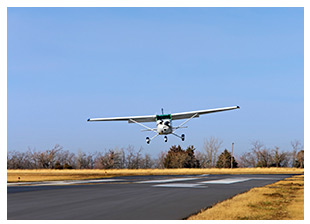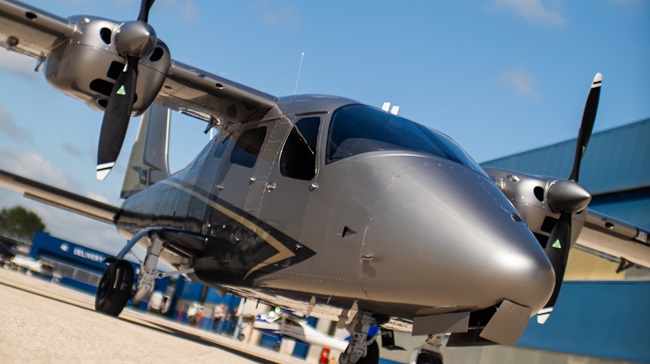Training Tips |
Pounce on the pitch
Good work if you said this was the early stage of a balked landing or go-around. If there seems to be some dissonance between "power increasing" and "the pilot applying strong forward pressure to the control yoke," think about your most recent practice go-around: What did you have to do to get the aircraft climbing? Suppose you are established on a stabilized approach, power off and full flaps, on short final, trimmed so that it takes no special physical effort to maintain the pitch attitude and airspeed. Suddenly an aircraft taxies onto the runway unannounced, or a ground vehicle appears without warning. You immediately commence a go-around: full power, aggressive right rudder to offset left-turning tendency, and (if recommended) an immediate partial retraction of flaps. How will your aircraft, established in a power-off glide, respond to that quick burst of power? It will respond by seeking to maintain its trimmed airspeed. It does that by pitching up—perhaps quite vigorously—as it pitches to the attitude that would maintain its trimmed airspeed at the new power setting. Allowing the strong pitching-up response to proceed unrestrained could cause an excessive angle of attack. So as you busily work to arrest the descent, reconfigure, maintain directional control, and keep tabs on the goings-on below, add the necessary forward pressure (which also will help you quickly establish the recommended climb airspeed). What about retrimming? You'll have your hands (and feet) full of aircraft control chores during this crucial time, but you may find that some "rough trim" helps you cope with the pitch forces created by the quick transition from power-off glide to full-throttle climb. But don't become distracted by the urge to trim. "As soon as the appropriate climb airspeed and pitch attitude are attained, the pilot should 'rough trim' the airplane to relieve any adverse control pressures. Later, more precise trim adjustments can be made when flight conditions have stabilized," explains a discussion of go-around technique in the Airplane Flying Handbook. A go-around commenced at low altitude is among the highest of high-workload scenarios. Whenever you must divide your attention between aircraft control tasks and conflicting traffic, remember: Fly the airplane first! Training ProductsProfessional pilot book serves as aviation referenceEverything Explained for the Professional Pilot is positioned as an aviation resource book. The 430-page book includes information essential and necessary for every pilot that explains all aspects of aviation, from props to heavy jets. The book costs $52.99. Pilot Mission launches first e-bookPilot Mission LLC has released its first digital e-book, the Private Pilot eBR, written for private pilots in training. It also offers a refresher piece for those looking to get back into flying by offering interactivity and quizzes. The book costs $19.99. Note: Products listed have not been evaluated by ePilot editors unless otherwise noted. AOPA assumes no responsibility for products or services listed or for claims or actions by manufacturers or vendors. Final ExamQuestionDuring your preflight on a Saturday morning, you notice that the left main landing tire is flat. Because it is Saturday, no mechanics are around. Can you, as the owner of the airplane and a private pilot, legally remove the tire and install another tire? AnswerYes you can. 14 CFR 43.3(g) states: "Except for holders of a sport pilot certificate, the holder of a pilot certificate issued under part 61 may perform preventive maintenance on any aircraft owned or operated by that pilot which is not used under part 121, 129, or 135 of this chapter. The holder of a sport pilot certificate may perform preventive maintenance on an aircraft owned or operated by that pilot and issued a special airworthiness certificate in the light-sport category." What is considered preventive maintenance? See 14 CFR 43 Appendix A(c). It lists 32 items that are considered preventive maintenance. The "removal, installation, and repair of landing gear tires" is one of them. Got a question for our technical services staff? Contact AOPA. |
 Identify this scenario: The aircraft is close to the ground with the power increasing and configuration changing; the pilot is applying strong forward pressure to the control yoke.
Identify this scenario: The aircraft is close to the ground with the power increasing and configuration changing; the pilot is applying strong forward pressure to the control yoke.

